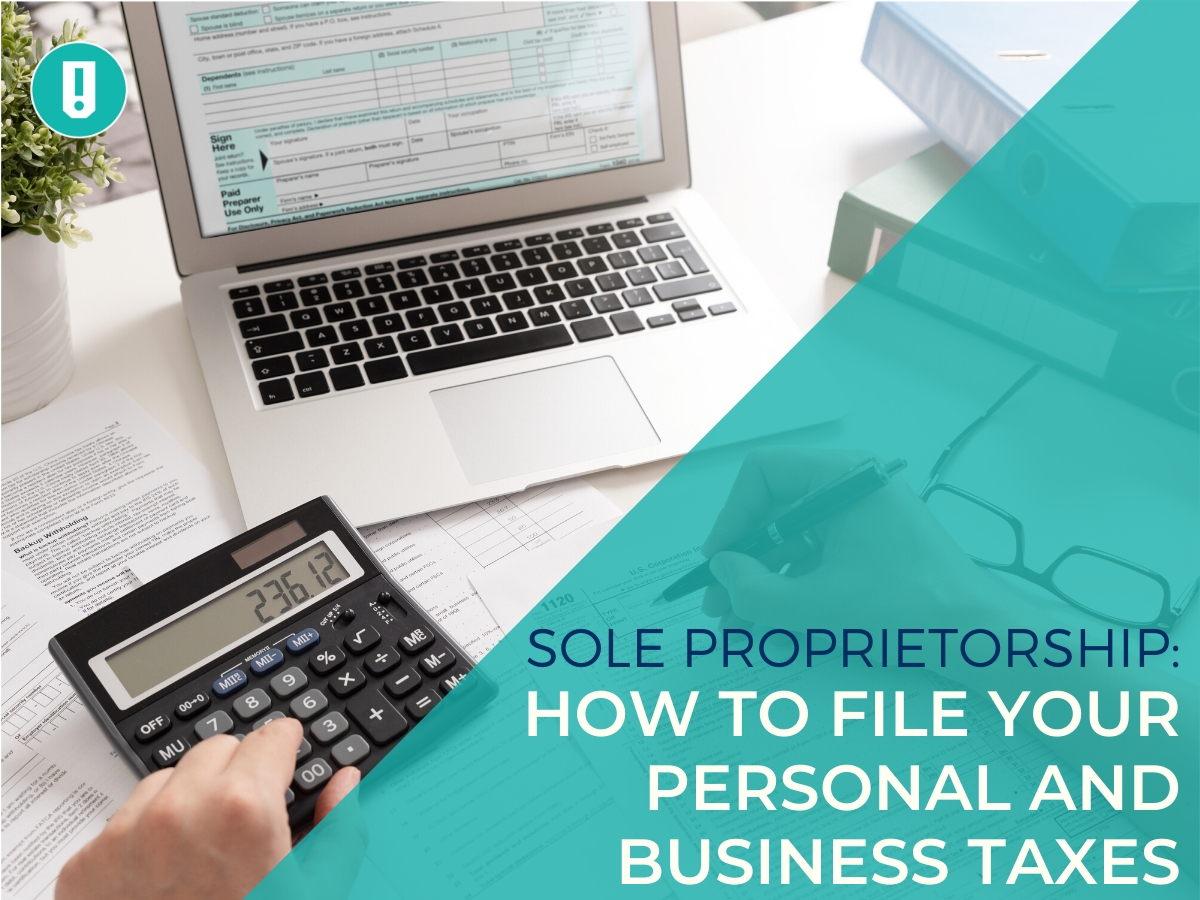There’s one month left to file your tax return before the April 15th deadline. Although tax season and filing can be stressful, there is no need to worry just yet…there’s still plenty of time. As a sole proprietor, you’ll need to file a tax return for both your personal and business expenses. Luckily, those forms can be sent in tandem. Here’s everything you need to know about filing a tax return for a sole proprietorship.
Best Practices for Filing
No matter what form you’re using, there are several ways to make your filing process quicker and easier. Before you even begin to file your return, you should collect and organize any essential financial documents. These could include past tax returns, invoices for business expenses, income statements, etc.
Once you start your tax return, you should use electronic forms. E-filing your tax return will guarantee that your refund is delivered weeks before a mailed paper form. Most e-filing software can do the calculations for you as well, which helps you fill out your tax return faster.
When e-filing your tax return, make sure to select direct deposit as your refund method. Direct deposit will guarantee that your refund will be delivered even quicker; it also removes the risk of a mailed check being stolen or sent to the wrong address. By using a banking app with instant notifications, you’ll be able to access your refund immediately as well. Unsurprisingly, for these reasons and others, 8 out of 10 filers choose to receive their refund by direct deposit.
Form 1040 for Personal Taxes
One of the most commonly used forms, Form 1040 is used to report your individual federal income tax return. To start this form you’ll include personal information such as your filing status, any dependents you’re claiming, and your Social Security number.
The next section regards several lines on taxable income. Sources of taxable income that will appear on this form include wages from W-2s, income from investment (interest, dividends, IRA, capital gains, etc.), social security benefits, and other forms of additional income. If any of these lines do not apply to you just leave them blank. The form will then walk you through calculating your deductions and taxable income.
After calculating your taxable income, you can claim deductions such as the child tax credit or earned income tax credit, if you’re eligible. You’ll also include information on any other tax payments in this section. On line 15 you’ll report self-employment tax, which sole proprietors are required to pay—this will require an additional form, Schedule SE.
Once you’ve calculated your total tax and total payments, you will subtract total tax from payments to determine if you overpaid and require a refund from the IRS, or underpaid and still owe the IRS money.
Schedule C Attachment for Business Taxes
Some business structures require completely separate tax forms from their owner’s personal tax return. Luckily, since there is no distinction between owner and business in a sole proprietorship, business taxes can be filed alongside personal tax returns as a Schedule C attachment. On this form you’ll report the profit or loss from your business.
Again, you’ll start with some personal information on how you run your business. This includes identifying information about your business and other lines on how it is run, including the accounting method and your level of participation as the owner.
Next, you’ll use information gathered from receipts, profit/loss statements, and balance sheets to determine your gross profit and income. Line items in this section include income from sales, returns/allowances, cost of goods sold (calculated in a later section), and other forms of income.
Much like your personal tax return, any section that does not apply to you does not need to be filled out. On a Schedule C form, many of the lines may not apply to your business. This is especially true for the section on expenses. The expense lines could include reporting on advertising, labor, rent, supplies, and travel among many other things. This will help you determine your total profit or loss.
Once all of the information is completely filled out, you can include the Schedule C attachment with Form 1040.
Summary
As a sole proprietor, the easiest way to file both your personal and business tax returns is to keep organized documentation on your income and expenses throughout the year. If you haven’t submitted your tax return yet, you should review all of the necessary documents and begin as soon as possible. If you already have, make sure to continue organizing your paperwork for next year.







Leave A Comment